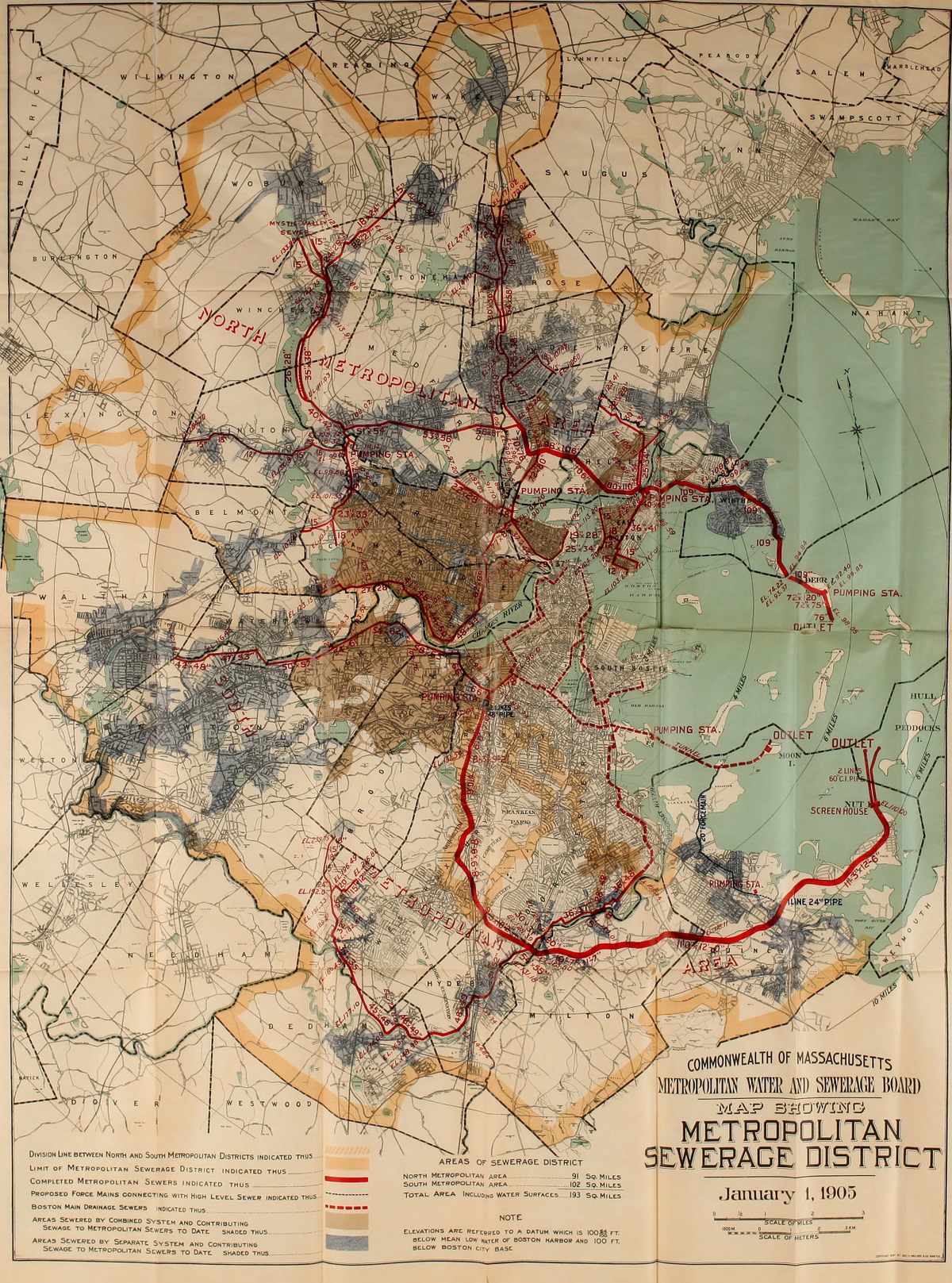A Beautiful Map of Boston’s Sewers
It’s the perfect day to look at some historic Beantown infrastructure.
Every city needs sewers. After all, they’re vital for piping human waste far, far away from where people live.
You might say that Boston especially needs them, though. For example, one of the area’s best-known residents, the football quarterback Tom Brady, apparently drinks up to 37 glasses of water a day. (And sometimes that still isn’t enough, I guess!)
That’s one reason it’s so interesting, today especially, to look at this colorful 1905 map of the Boston area’s historic sewer system. Here, drink it in below:

On this chart, the red lines are the completed sewers, transporting great gobs of waste from the heart of the city. Zoom in, and you can follow them through town—there’s one just blocks from last year’s Super Bowl victory parade route. You can then trace them all the way out to Quincy and the North Shore, and directly into the sea.
This map comes from an annual report by the Massachusetts Metropolitan and Sewerage Board. The report itself has more interesting tidbits. For example, in 1904, the Water Works spent about two million dollars, most of which went to improving dams and reservoirs and buying Spot Pond. Good decisions by the people in charge!
There are also several up-close photographs of cracked and pitted water pipes—something else residents of the city might enjoy gazing on today, in order to learn about their history:

If you’d like to examine Boston’s infrastructure further, there are some other good historic maps viewable at the Boston Public Library’s “Beneath Boston” exhibit. You can also find information about the city’s contemporary waste disposal system at the Water and Sewer Commission’s website. (For instance, if you took all the pipes currently in use and put them end to end, they would stretch the length of 21,340 football fields. )
Viewers can come to their own conclusions. But as a resident myself, I think it’s safe to say that today, Boston is a sewer town, through and through.
*Correction: This post previously stated that the sewer lines went out to Cape Cod. They actually stretch to Quincy.















Follow us on Twitter to get the latest on the world's hidden wonders.
Like us on Facebook to get the latest on the world's hidden wonders.
Follow us on Twitter Like us on Facebook